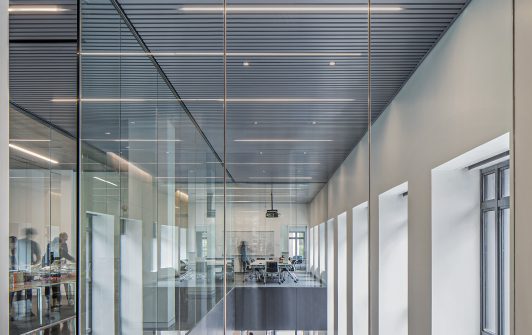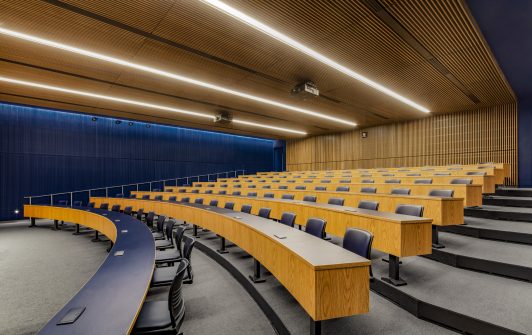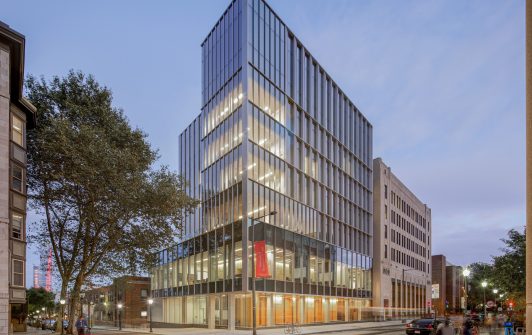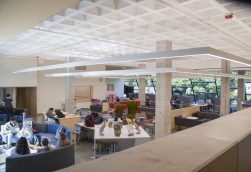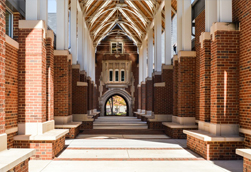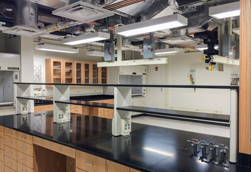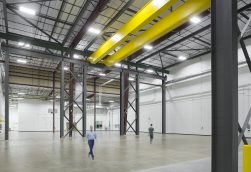When the University of Pennsylvania School of Arts & Sciences decided to consolidate their political science and economics departments into one facility, they planned a building that would outwardly reflect the importance of this new academic powerhouse.
Located on the northeast corner of Walnut and 36th Streets, the Ronald O. Perelman Center for Political Science and Economics combines a historic building with a modern addition. The older building, which was constructed in the 1920s, was originally home to the West Philadelphia Title and Trust Company.
When it came time to put the project into motion, the architect, KPMB of Toronto, turned to AHA Consulting Engineers (AHA) for their proven design experience and expert knowledge in the higher education market. The firm provided MEP/FP Design, LEED Administration, and LEED MEP Documentation services for the both the renovation of the original building and the new expansion.
“I always enjoy projects that combine new construction with an existing building,” said Kevin Jensen, Managing Partner at AHA. “I find the adaptive reuse of buildings very compelling. It is always interesting to see how buildings can get reused for new purposes over their lifetime.”
The mission of the project was clear. Yet, due to the age and original purpose of the Title and Trust building, the space was limited by low floor-to-floor heights and a multi-level basement with a large bank vault occupying the center, making large-scale renovations difficult.
AHA engineers worked diligently to devise a solution. They implemented a system of Chilled Beams with six-way valves to provide radiant heating and cooling to the facility while reducing the necessary piping and ductwork. This better accommodated the lower ceiling heights.
The addition, located to the north, features an abstract geometric composition of glass and aluminum mullions, except for a transparent base along street level. This outward appearance created a clear contrast between this new structure and the Art Deco facade of the historic portion of the building.
However, internally, the old and new were entirely integrated and decorated in a contemporary style. The facility includes an auditorium, a forum, classrooms, lounges, meeting rooms, and office spaces for both faculty and graduate students.
The architect, KPMB, also incorporated many sustainability measures into the project. All the offices feature operable windows to allow for fresh air. The building has been certified LEED Gold NCv2009 by the USGBC. The building also uses energy recovery wheels in its two air handlers as well as Aircuity sensors for monitoring the CO2 and humidity.
The 110,000 SF space opened in November 2018 and continued AHA’s long-standing relationship with Penn, which includes over 300 projects.
“The end product was successful,” Jensen said. “I think that it was well-liked by the school, both faculty and students, which is always a rewarding experience.”




